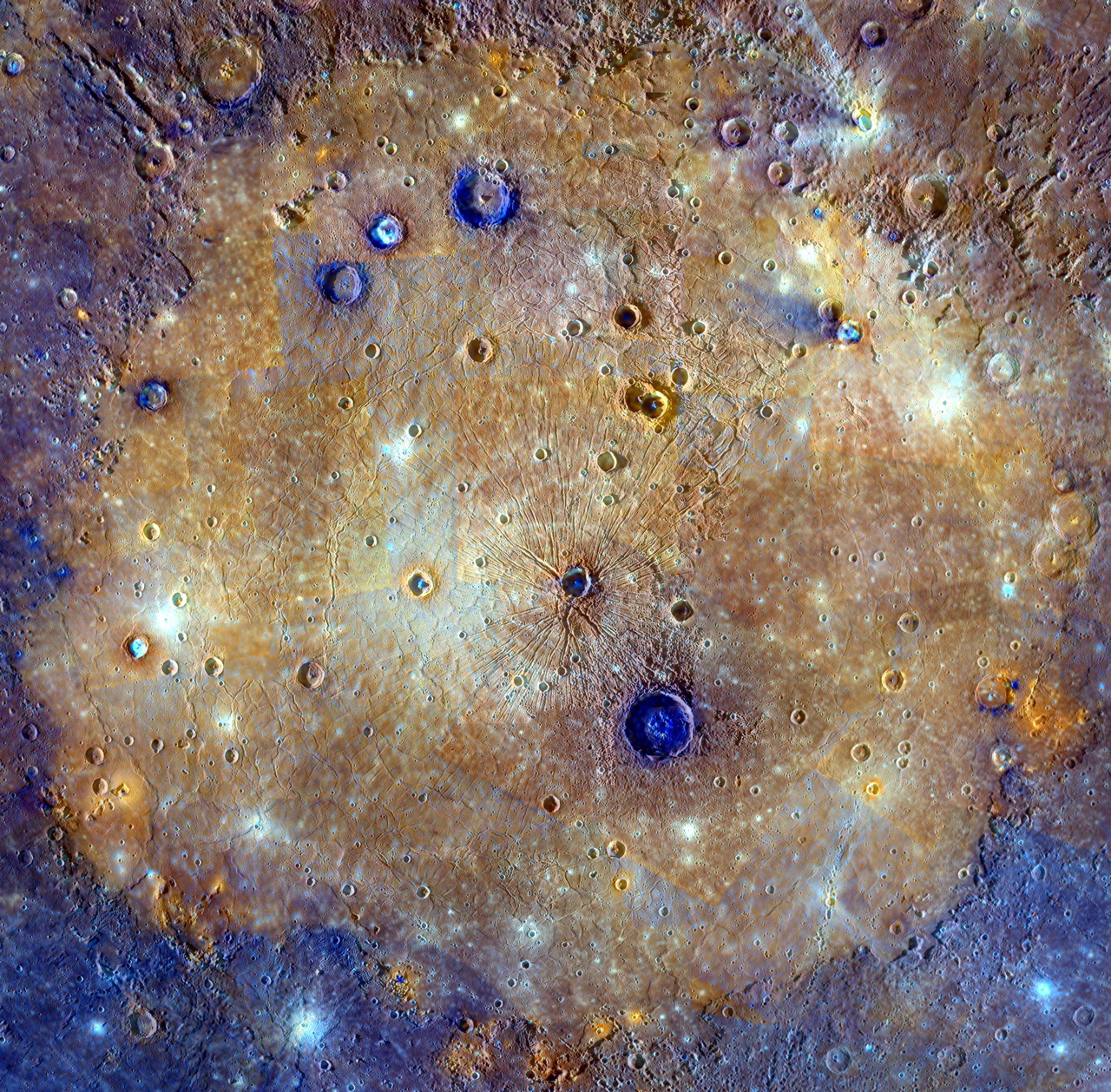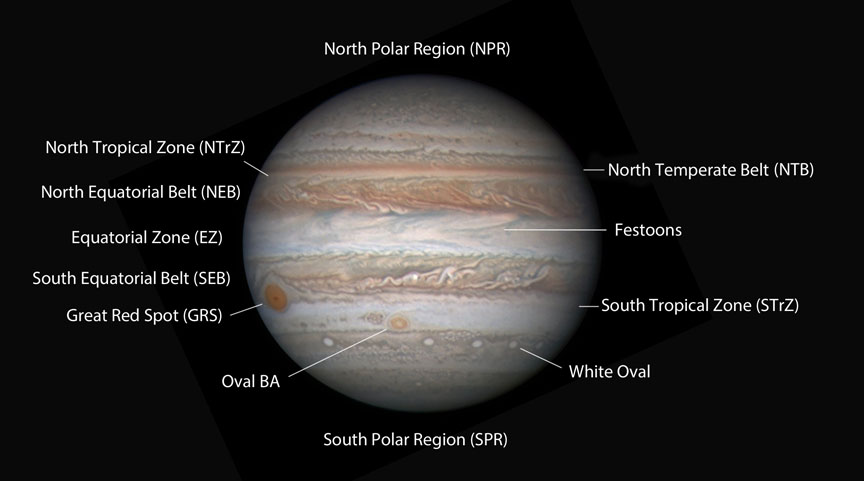Space Names 2
In my last blog, we looked at the naming of planets and their moons.
In Space Names 2, we’ll explore the names of surface features on other worlds.
New Moons!
But first some news.
Since my last blog, more planet moons have been discovered.
Jupiter has three more, taking the total to 95.
But Saturn is in a different league.
Astronomers found another 62 moons orbiting the ringed planet.
This takes the total number to an astonishing 145 !
All these new satellites are tiny moons, just a few kilometres across.
Will each of them receive names?
We’ll have to wait and see what the International Astronomical Union decides.
I think there’s definitely space for a moon called Dennis.
It would be small and round and orbit very slowly.
Our Moon
Our Moon is a good starting point for place names.
It is close enough to make out surface details with the naked eye.
Binoculars or a small telescope reveal lots more.
So let’s look at the names of prominent features.

The Moon from Lunar Reconnaissance Orbiter. Credit: NASA
In our NASA image, names in white are Mare, the Moon’s ‘seas’.
They are not water but lava plains.
Here huge asteroid impacts triggered volcanic activity.
The impact craters filled with lava to make basalt plains.
Human emotions give names to some mare.
Mare Tranquilitatis, the Sea of Tranquility, is the location of the first Apollo Moon landing.
The Sea of Serenity lies to its north with the Sea of Crises near the Moon’s eastern limb.
Craters are marked in yellow.
The International Astronomical Union recognises over 9000 craters.
Around 2000 of these have names.
Most are famous astronomers and scientists.
Giovanni Riccioli began this tradition in 1651.
Tycho, Copernicus and Aristarchus are the most prominent craters.
Others include Einstein, Darwin, Galileo, Halley, Leavitt, Newton, Pasteur and Rutherford.
Jules Verne, H G Wells and Leonardo da Vinci also have craters named after them.
To see more famous names, click on Wikipedia.
Perhaps the most poignant craters commemorate dead astronauts.
They include Grissom, White and Chaffee of Apollo 1 and Komarov of Soyuz 1.
There are also craters for the Challenger and Columbia crews.
Planet Features
Using telescopes, astronomers are able to see markings on the planets.
They received names, like the Syrtis Major on Mars and the Great Red Spot on Jupiter.
Then came the space age.
Cameras on robotic probes resolved many more features.
And, of course, they require names.
Mercury
Craters are the standout features on Mercury.
And wonderfully, these craters are named for artists, writers and composers.

Mercury, Messenger spacecraft. Credit: NASA
So there’s Boticelli, Bronte and Byron with Dickens, Degas and Dvorak.
Moving through the artistic alphabet, we see Joplin, Kipling and Milton.
Then we have craters named for Christopher Wren, Andy Warhol and Muddy Waters.
It’s an artistic ‘Who’s Who’.
You can see a full Wikipedia list here. It’s brilliant!

Caloris Basin on Mercury. Credit: NASA
The biggest crater on Mercury is the Caloris Basin.
When craters are really big, they become basins.
Caloris is over 1500 km across and its walls are a kilometre high.
NASA’s colour-coded image vividly picks out this huge impact area.
Mercury has other geological features with themed names.
Plains bear the name Mercury in different languages.
Tir Planitia comes from Norse whilst Budh is Hindu.
Ships of famous explorers provide the names for cliffs.
So on Mercury we find Beagle, Discovery and Terror.
Rather bizarrely, bright areas called faculae are snakes in different languages.
So there’s Inyoka (Zulu), Nathair (Irish) and Nakahi (Maori).
Mercury is space name paradise!
Let’s see if other worlds can match it.
Venus
Telescopes cannot see the suface of Venus.
Cloud covers the entire planet, all over, all the time.
With NASA’s Magellan space probe, we saw the first images of the Venusian surface.
Magellan’s radar penetrated the clouds and gave us a detailed map.
Because these features hadn’t been seen before, a whole bunch of new names were needed.
The only female planet commemorates famous women, both historical and fictional.
One exception is Mount Maxwell, named for Scottish scientist James Clerk Maxwell.

Venus surface, radar map. Credit: NASA
Craters include Cleopatra, Boudica and Pocahontas.
There’s also Dietrich, Garbo and Garland.
Guinevere and Helen are heroines of Venus plains, along with Rusalka, a Russian mermaid.
Large areas are called Regio.
Here mythological giantesses rule the names.
Thetis and Themus are Greek titans whilst Ulfrun and Laufey come from Norse stories.
Finally Maxwell Mons is joined by a host of female mountains.
These include Sephira Mons (Spain), Milda Mons (Lithuania) and Nayunuwi mons (Cherokee).
My favourite is Gwen Mons.
Gwen is the Irish goddess of happiness and smiles.
There are hundreds more female-named features on Venus.
To see them and find your favourites, click here.
Mars
In the 19th century, various astronomers named features on Mars.
Syrtis Major is a dark area, whilst a lighter, circular marking is Hellas.
Modern space probes reveal the surface clearly.
The newly revealed features required names.

Mars map, Mars Orbiter. Credit: NASA
Data from NASA’s Mars Orbiter shows flat plains in the north and highlands in the south.
The colour-coded map shows the topography more clearly.
The plains are called planitia and include Chryse, Utopia and Amazonia.
Highland areas include Tharsis.
Here there is a range of extinct volcanoes.
They include Olympus Mons, Mount Olympus, the largest volcano in the Solar System.
Mariner Valley, Valles Marineris, named for the first space probes to the red planet, cuts through Tharsis.
This huge rift valley is over 4000 km long, 120 km wide and has sides 7km high.

Mariner Valley, Viking Orbiter. Credit: NASA
In the southern highlands there are two lighter, circular features.
Visible in telescopes, they were named Argyre and Hellas.
They were named by Giovanni Schiaparelli in 1877.
Hellas means Greece, whist Argyre is a mythical Greek island of silver.
Both are large impact craters, several hundred kilometres across.
There are hundreds more impact craters on Mars.
Bigger ones, over 50km wide are named after scientists and writers with a Mars connection.
Astronomers include Schiaparelli, Huygens and Cassini.
Writers are represented by Wells, Burroughs and Heinlein.
Smaller craters are named for towns around the world.
England is represented by Swanage, Corby and Crewe among others.
The full list is fascinating. To see it click here.
Gas Giant Planets
The next four planets are made of gas, mainly hydrogen.
We see the outer layer of gas, the clouds at the top of their atmosphere.
These clouds are in constant motion so there are no permanent surface features.
However, on Jupiter in particular, cloud formations can persist.
So let’s look briefly at names on the four gas giants.
Jupiter
Jupiter’s surface shows dark bands and lighter coloured zones.
These layers are stable and have lasted over centuries.
The light bands are clouds of ammonia ice.
Dark zones contain sulphur and phosphorus compounds.

Their position on the planet disc gives their names.
Equatorial belts and zones are near the middle whilst tropical and temperate denote stripes further away.
These names come directly from Earth’s climate zones.
They are names of convenience only.
There are no seasons on Jupiter.
Jupiter’s spots are another notable feature’
They are storms, vortices, in the deep cloud layers.
The most prominent is the famous red spot, which has lasted for centuries.
This storm is twice as wide as planet Earth.
Saturn
Saturn’s surface clouds are banded, like those of Jupiter.
However they are much more muted in appearance.

Saturn fro Cassini. Credit: NASA
Like Jupiter, the bands are called Equatorial, Tropical and Temperate.
Storms appear occasionally on Saturn.
One of the most famous was seen in 1933 by English comedian Will Hay.
Hay was a keen amateur astronomer and became a fellow of the Royal Astronomical Society.

Will Hay’s drawing of the white spot on Saturn.
The storm, like others on Saturn, appeared as a white spot.
Uranus
Through a telescope, Uranus is a greenish-blue disc.
The colour comes from methane in the clouds.

Uranus from Voyager 2. Credit:NASA
The Voyager 2 spacecraft showed a bland greenish-blue disc.
There is a hint of banding, which can be seen on NASA’s page here.
The three are an equatorial band and polar cap, with a ‘summer collar’ between.
Neptune
Through a telescope, Neptune is a small blue disc.
Voyager 2 revealed a bland blue planet, similar to Uranus.

Neptune, Voyager 2. Credit: NASA
Voyager showed a storm on Neptune as a dark spot.
Here winds blow at up to 2000 km/hour.
A blue methane mist obscures the rest of the planet.
Pluto
For names, Pluto is a much more interesting than its huge gas neighbours.
Telescopes show no detail.
Pluto is tiny, a dwarf planet, and very far away.
In 2015 the New Horizons spacecraft finally revealed what this small world looks like.
There is a solid, icy surface with distinct features.
The New Horizons team provided their names.

Pluto from new Horizons. Credit: NASA
A bright heart-shaped area of nitrogen ice is the most prominent feature.
It carries the name of Pluto’s discoverer, Clyde Tombaugh.
Lowell Regio in the north honours the man who began the search..
Terra are landmasses carrying the names of space probes like Voyager, Viking and Venera.
Mountains bear the names of explorers.
Tenzing Norgay, Hillary and Cousteau have mountains on Pluto.
A low plain called Sputnik takes up part of Tombaugh Regio.
More robotic missions like Ranger and Rosetta are also plains.
Astronomers and others who have contributed to a study of Pluto give their names to craters.
My favourite is Burney, for Venetia Burney, the schoolgirl who proposed Pluto’s name.
A list of named features on Pluto can be found here.
As ever, it’s fascinating to see who is who on a planet.
Asteroids & Comets
In a future blog we’ll look at minor members of the Solar System.
We’ll see how asteroids and comets are named.
And we’ll explore how you can get your name in space!

The author: Dennis Ashton is a Fellow of the Royal Astronomical Society and a Wonderdome presenter.
Would you like to hear more Astronomy news?
Do you want to to find out about our upcoming public events?
Follow WonderDome Portable Planetarium on Twitter and Facebook or go to our web site wonderdome.co.uk

